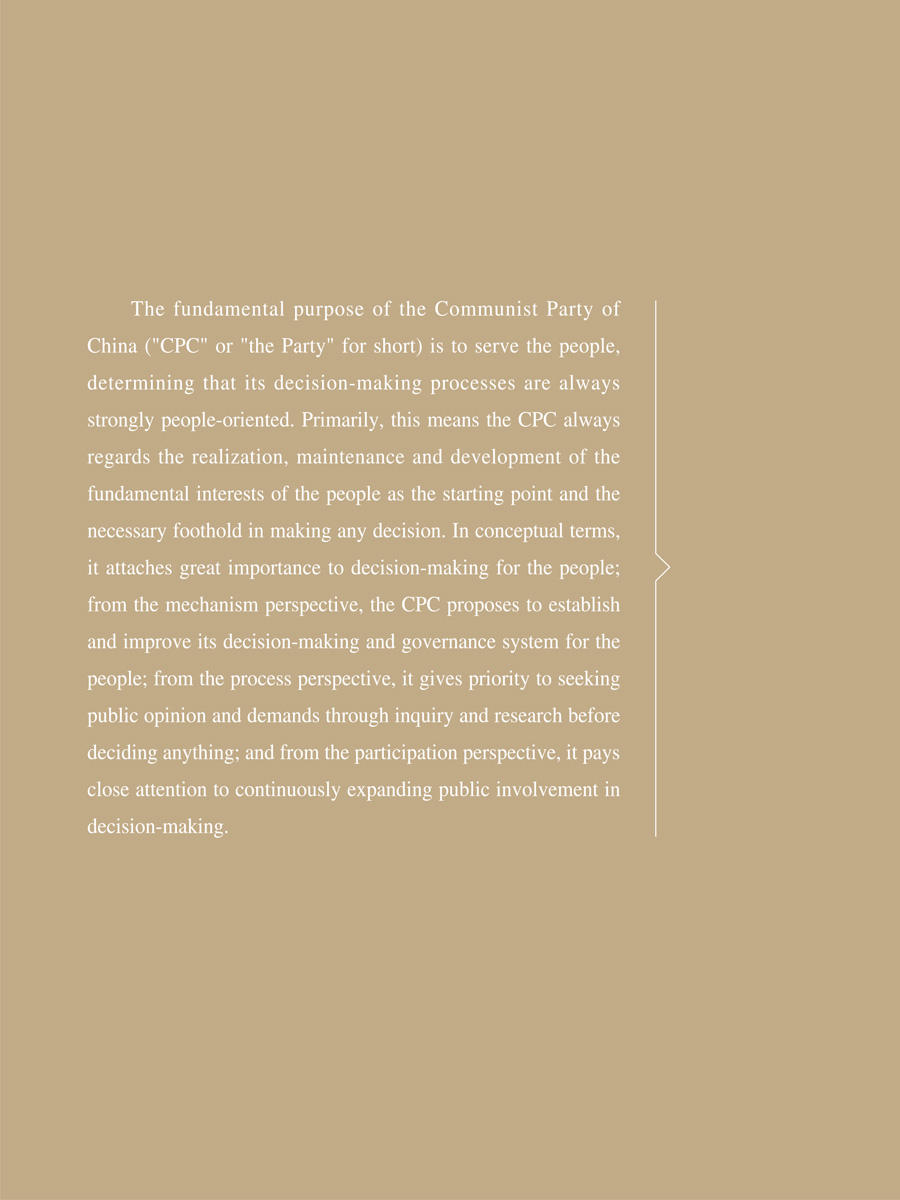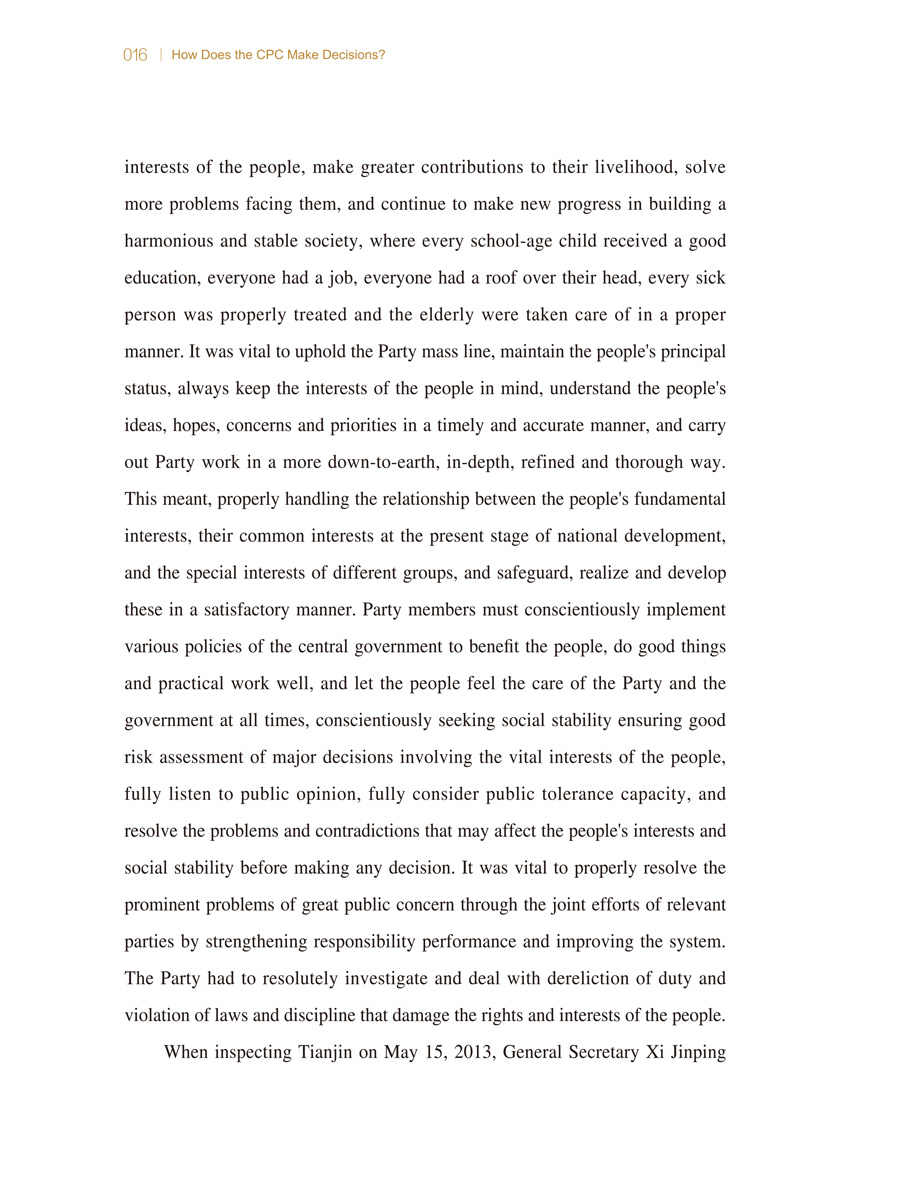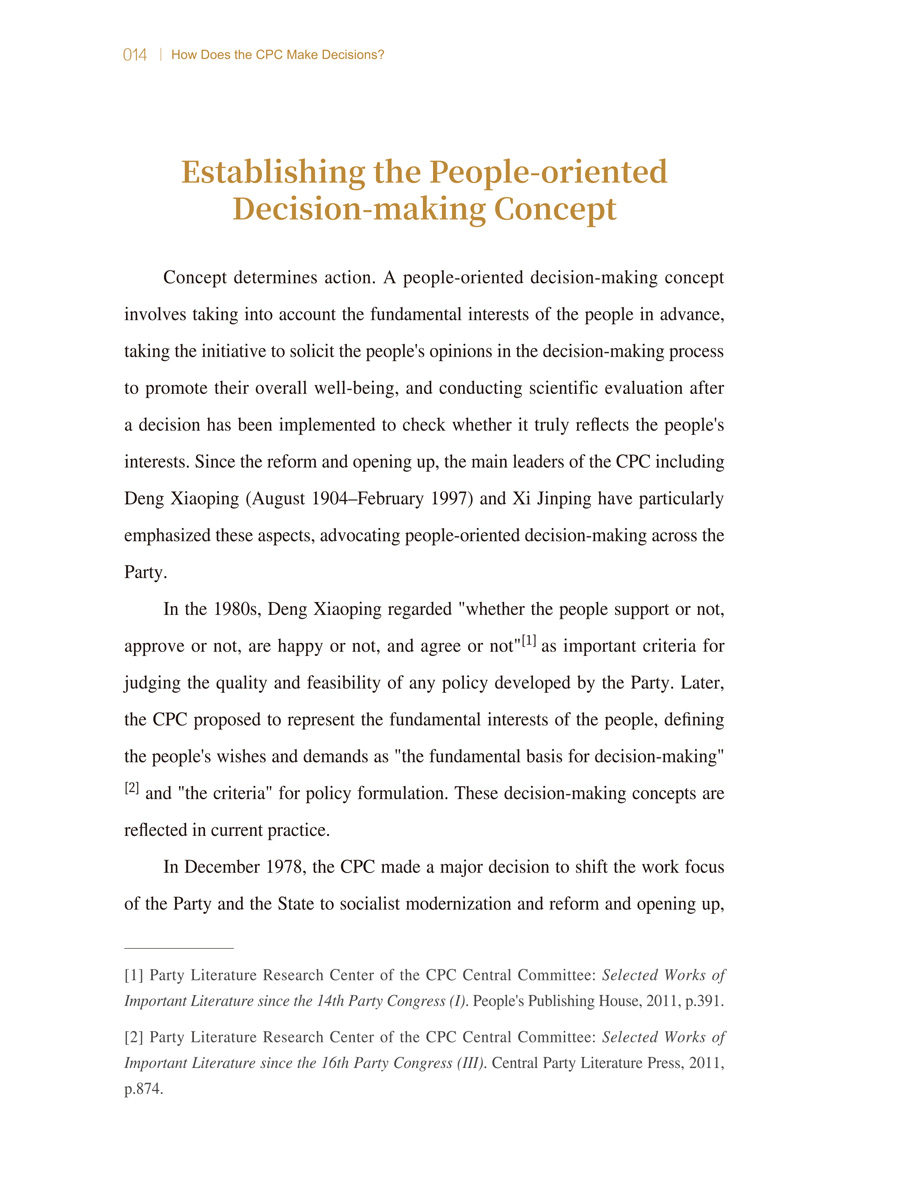
出版社: 五洲传播
原售价: 98.00
折扣价: 56.90
折扣购买: 中国共产党如何决策(英文版)/中国共产党丛书
ISBN: 9787508541921

沈传亮,教授、博士研究生导师,现供职于中共中央党校党史部,主要从事中共党史党建研究,中共决策理论与实践研究,已出版《决策中国:改革开放以来中国共产党决策体制历史演进》等专著8部。主持或参与国家社科基金重点课题、重大课题十多项,发表论文百余篇。
It is a prominent feature that the Chinese Communist Party adheres to follow the “mass line” in decision-making. In 1978, Anhui Province was stricken by a severe drought that caused serious hardship at the time of the autumn planting. To tide over the famine, the provincial Party committee decided to make provision for recovery. Part of farmland were lent to peasants to grow wheat and vegetables. The resulting output was kept from the usual State procurement and made available exclusively for the local grain ration. Such an initiative reminded the masses of the policy fix farmland quotas on a household basis once adopted in the 1950s to communities pull through severe famine. Fengyang County of Anhui, long renowned for its flower-drum opera, was the original point of fixing farm output quotas for each household in certain stricken villages. Among them, Xiaogang Village of Liyuan Commune was the most notable. Eighteen households secretly signed a contract in a winter night of 1978. This was the beginning of the household-based contract system. Due to many uncertainties about this pioneering attempt, they signed the agreement in secret for fear their action would affect their families. When the land was distributed to each household, the farmers were fully motivated. Despite the drought, everybody exerted themselves to farm to the utmost extent. Output doubled in 1979. A couple of years later, the village produced a greater amount of grain than ever before. The community was transformed into a notable wealthy village, shedding its past infamous reputation as a “beggar village”. Actually, there were many villages undertaking making their own experiments. In early October 1978, the Laozhuang production team of the Guanting Commune Farm Brigade in Feixi County of Anhui followed their team leader to distribute land to each household. Attach to the land handout was a provision that work points would be calculated based on outputs and a fixed quota was set as 100 kg of grain produced per mu (0.067 hectares);by the following year’s harvest, every additional 0.5 kg of grain gained a household a reward of three work points; each family might keep any surplus, but receive no supplementary award. In addition, they needed to be self-financing in regard to the purchase of seeds and fertilizers. It was the first production team adopting the system in Anhui province, and, indeed, even in the whole country. The Sichuan provincial Party committee also supported peasants to fix output quotas for each group. And, it allowed and even encouraged commune members to establish appropriate family sideline production operations. Similar practices were later in a number of other provinces......



